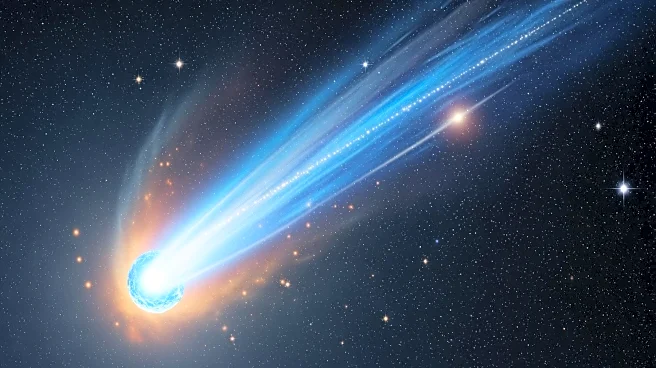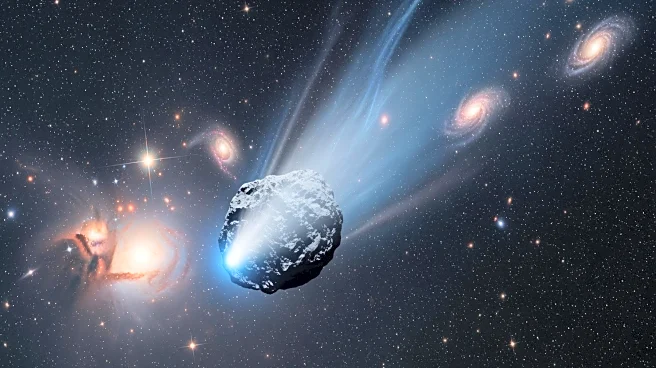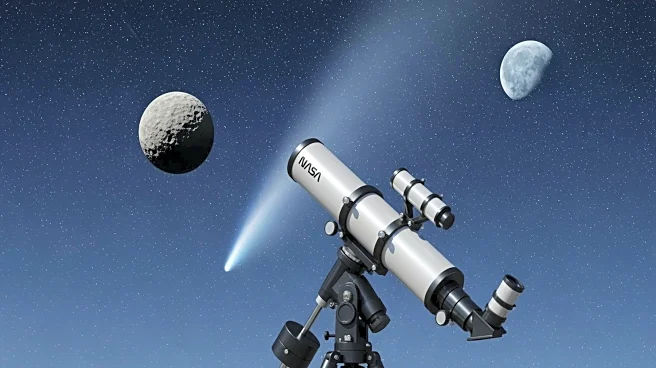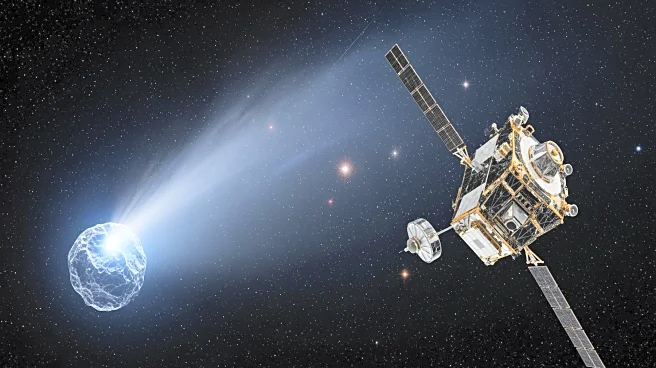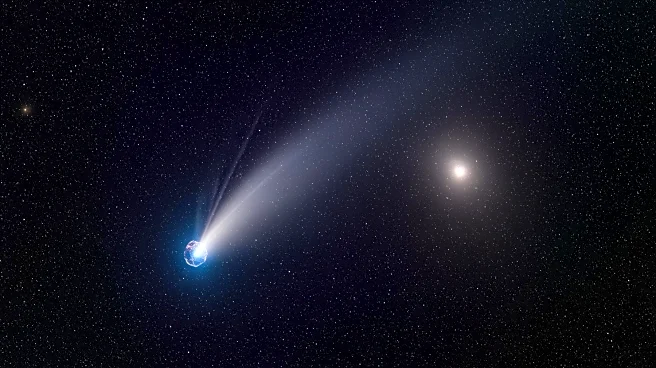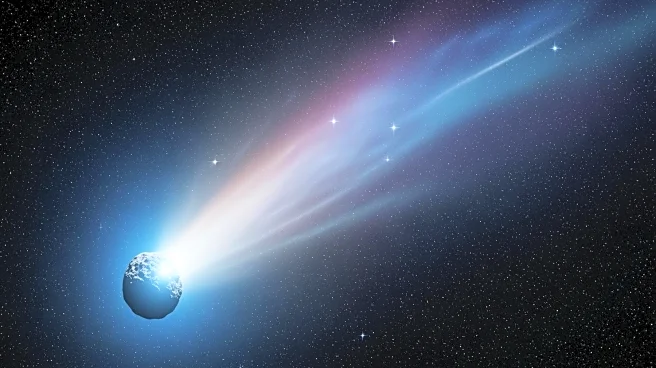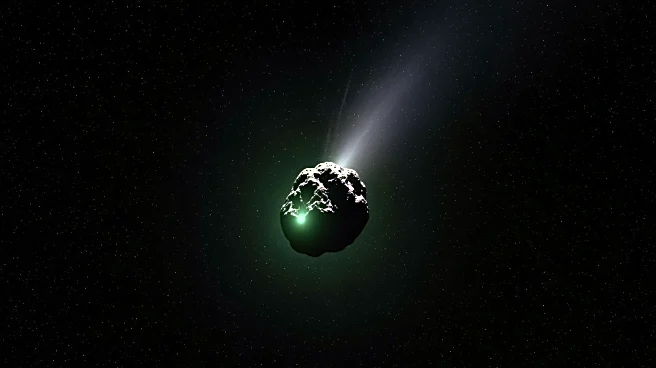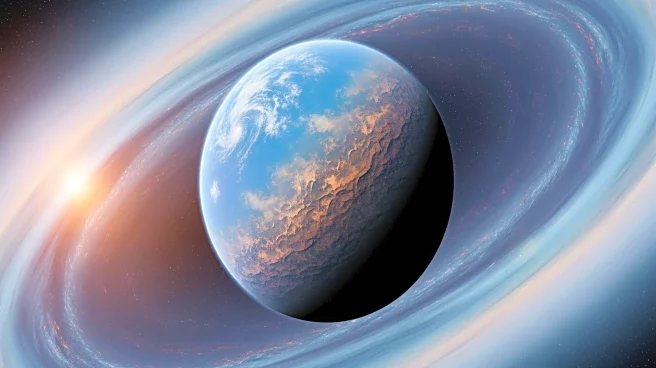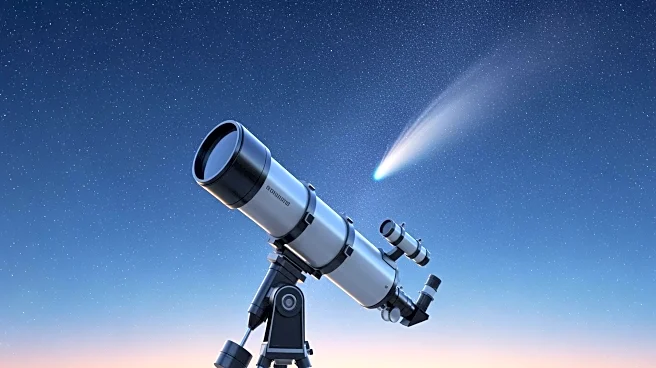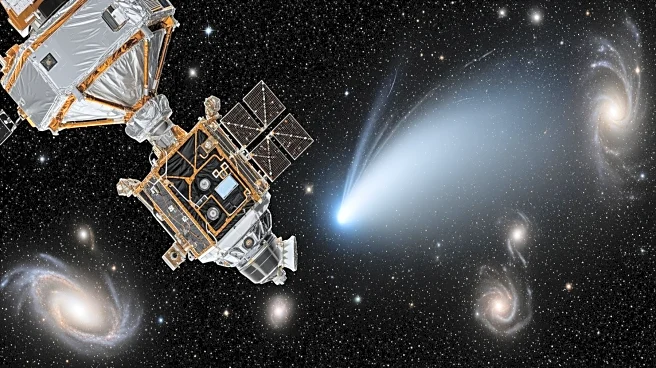What's Happening?
Recent data from NASA's Jet Propulsion Laboratory and the Minor Planet Center have provided new insights into the interstellar comet 3I/ATLAS following its perihelion passage. Observations indicate a significant brightening and non-gravitational acceleration,
suggesting mass loss due to the rocket effect. The comet's trajectory and acceleration components have been measured, revealing a radial acceleration away from the Sun and a transverse acceleration relative to the Sun's direction. These findings imply that 3I/ATLAS lost a measurable fraction of its mass during perihelion, raising questions about its nature and composition.
Why It's Important?
The non-gravitational acceleration of 3I/ATLAS offers a unique opportunity to study the dynamics of interstellar comets. Understanding the mechanisms behind this acceleration could provide insights into the physical processes affecting such objects. The data may also inform theories about the composition and behavior of interstellar visitors, contributing to broader astronomical research. The findings challenge existing models of cometary dynamics, prompting further investigation into the factors influencing their trajectories and mass loss.
What's Next?
Astronomers will continue to monitor 3I/ATLAS as it moves through the solar system, analyzing its behavior and composition. Spectroscopic observations by the James Webb Space Telescope in December may reveal more about the comet's interior and the processes driving its acceleration. Researchers will also compare the comet's characteristics with those of other interstellar objects, seeking to refine models of their dynamics. The ongoing study of 3I/ATLAS could lead to new discoveries about the nature of interstellar comets and their role in the solar system.
Beyond the Headlines
The study of 3I/ATLAS highlights the complexities of interstellar exploration and the challenges of interpreting data from distant objects. The comet's unique characteristics may prompt debates within the scientific community about its origins and nature. This event also underscores the importance of technological advancements in enabling detailed observations of interstellar phenomena. The findings may inspire future missions and research aimed at uncovering the mysteries of the universe.
